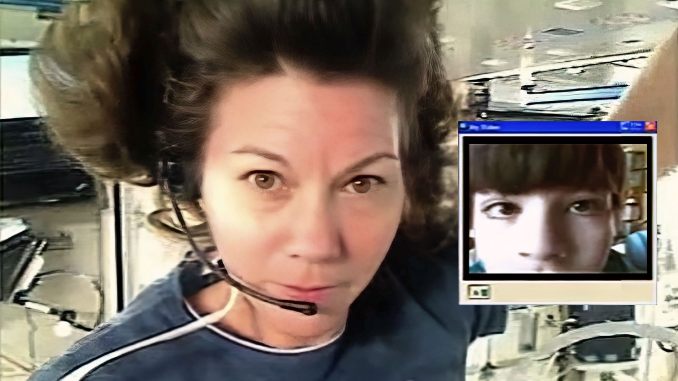
The Longest Goodbye Sticks to the Surface When Considering Issues of Long-Term Space Travel
Nodding to the title of the Raymond Chandler novel, adapted as a delightfully shaggy mystery by Robert Altman, The Longest Goodbye is also a clearly definable idea that takes a circuitous route. But Ido Mizrahy’s documentary, about the future of long-mission space travel and the isolation it entails, doesn’t derive any charm from its approach. What initially feels like a budget presentation about the issues of being stuck in space and several proposed solutions (explored at various lengths) ends up feeling both too structured and, eventually, too scattered for its fascinating yet still speculative subject matter.
“Can we get to Mars?” is a big question, but “Can we get to Mars without losing it?” is one that’s perhaps more relatable to us non-astronauts after weathering years of pandemic isolation. NASA psychologist Dr. Al Holland acts as a guide through this latter query, which is initially embedded in a riveting historical account of how American spaceflight has grown to consider the mental implications of leaving the planet. It’s not something a bunch of gung-ho test pilots were too concerned about when they just wanted to bust out of the atmosphere, or even land on the Moon, but something increasingly important as we start staying off-world for months (on the International Space Station) or years (towards the red planet).
Seeing this from the inside, where we get firsthand accounts of the engineer-minded pros that slowly started treating astronauts as more than machines, culminates in the compelling parallels drawn between veteran astronaut Cady Coleman and first-timer Kayla Barron. When focusing on the bevy of footage documenting their stays in space (especially Coleman’s heartwrenching webcam conversations with her husband and young son on what looks to be the same ‘90s desktop my family had in our living room), The Longest Goodbye is riveting.
NASA documents everything: There’s a camera constantly rolling in the ISS, and we reap the rewards of space Big Brother. Sleeping quarters are plastered with images of home; technical troubles frustrate parent and child alike; the allure of groundbreaking science overwhelms anything as pettily personal as returning back to Earth. We see the magic, yes, but we also observe the compartmentalized sadness—boxed up and contained like that tiny on-screen window housing Coleman’s pixelated family. But Mizrahy’s framing can stray even in his doc’s strongest section: Much of Barron’s experience isn’t told from her perspective, but that of her earthbound husband. I’m sure he was easier to wrangle for interviews, but with so much focus on him and their plans for a family, Barron’s interiority is just as slighted as if we were back in the ‘50s with our white short-sleeves and black ties.
This issue (without the implied sexism) extends to The Longest Goodbye’s bullet list of quick-fixes. Each offers up a unique lack of interrogation with wide-ranging results. A section recounting an aborted isolation experiment in the desert ends just as an electrocution makes it interesting; one about VR-replicated spouses and nature is so uncanny as to be laughable; bits about human hibernation or an idiotic AI companion named Cimon practically beg for someone that’s read one piece of sci-fi to step in. Take a floating computer orb seriously as a way to stave off isolation? I’m sorry Dave, I’m afraid I can’t do that.
But surreally, we start with an anecdote of how this issue can apply to our life on terra firma: Holland’s expertise helped lend a hand when 33 Chilean miners were trapped by a cave-in for 69 days. It’s undeniably moving, a tale of engineering triumph and psychological steel orchestrated by communities both international and hyper-local. But it comes from so far afield that you initially think another movie got mixed in, its peanut butter floating into our chocolate in zero-G. It’s another example of The Longest Goodbye’s unbothered structure: Hit some topics and move on. But when it actually invests the time, like with those bookends between Coleman and Barron, the quarantined stresses that allegedly make this premise topical to the everyman get a chance to sink in.
The Longest Goodbye doesn’t take long to send us on our way, now apparently well-versed in the psychological complexities of long-term spaceflight. Just 87 minutes later, it still feels like we’ve only barely touched on the topic, but at least we weren’t stuck alone with it for long enough to play Cimon Says.
Director: Ido Mizrahy
Writer: Ido Mizrahy, Nir Sa’ar
Release Date: January 19, 2023 (Sundance)
Jacob Oller is Movies Editor at Paste Magazine. You can follow him on Twitter at @jacoboller.
For all the latest movie news, reviews, lists and features, follow @PasteMovies.































![iFi's GO Bar Kensei Dongle DAC Supports K2HD Technology With Some Samurai Swagger [Updated] iFi's GO Bar Kensei Dongle DAC Supports K2HD Technology With Some Samurai Swagger [Updated]](https://i0.wp.com/cdn.ecoustics.com/db0/wblob/17BA35E873D594/33FF/45A11/QTXOLJR4xDKSNMMk2WlTgjaIlvSgcYpeU1xJzUwIoYs/ifi-go-bar-kensei.jpg?w=768&ssl=1)
























